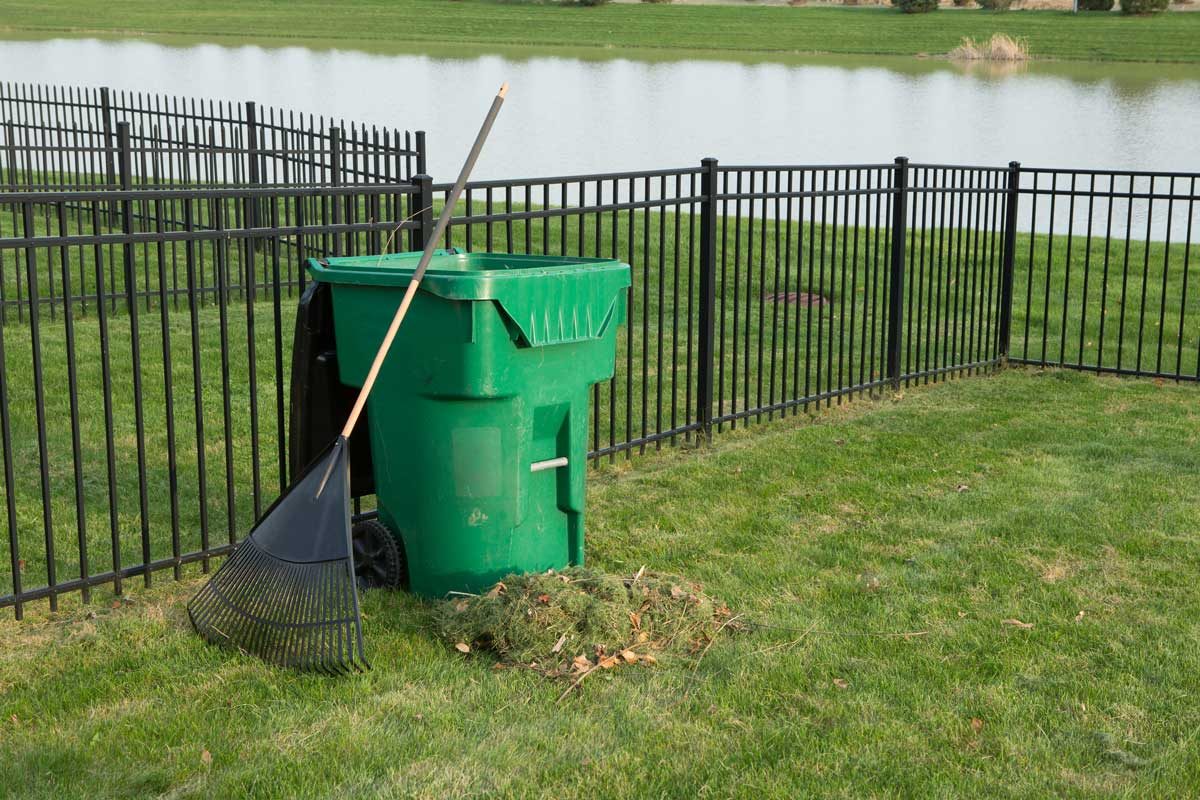Balance a beautiful lawn and yard with clean water best practices by following this advice from pros in the know.

Safe Lawn Weed Control Around Lakes and Rivers

Deciding how to safely weed or fertilize your lawn can present plenty of challenges in any yard, let alone one adjacent to a waterway. If your primary residence or summer home/cabin is near a lake, stream or river, know that lawn-care chemicals used to wipe out tough weeds can also be toxic to humans, pets, other wildlife and plant life.
“Generally, the biggest issue is you don’t want chemicals and physical items such as clippings or leaves to be in the water body,” says Kirsten Barta, a trained aquatic biologist and project manager for the Minnesota Pollution Control Agency.
The problem, Barta says, is multi-faceted. “The chemicals tend to be very water-soluble and contain toxic compounds that directly harm aquatic life, as well as nutrients (phosphorus and nitrogen) that will increase algae/plant growth,” she says. “That growth then dies and the bacteria breaking it down take all the oxygen out of the water, killing fish and other organisms.”
And, Barta adds, many fish and aquatic invertebrates are so sensitive to their surroundings that “it doesn’t take a large amount of change to kill them.”
When you see lakes and other bodies of water with that pea-soup appearance, Barta says that’s a sign nutrients are present that the aquatic system isn’t meant to handle. Nitrogen and pesticides also can poison humans and contaminate groundwater and wells, especially shallow or sand point wells.
On This Page
Lawn Care Products That Can Harm Lakes and Rivers
“Pretty much any improperly or over-applied lawn care product can harm the environment, even non-toxic ones,” Barta says.
One way to identify the right treatment is to do a soil test, which can help avoid overuse or misuse. “The key is to use the bare minimum, if any at all,” says Steve McComas, The Lake Detective and owner of Blue Water Science.
Barta says these products and chemicals should be avoided if you live near a waterway:
- RoundUp. This product is not federally approved for use near water. It may contaminate drinking/potable water sources and is readily water-soluble. “So while it may take care of weeds, it will also kill any shoreline plants,” Barta says.
- Any fertilizer containing phosphate. Runoff into lakes will cause algae blooms.
- Weed-and-feed products. These generally contain way more fertilizer and herbicide than needed, and both are readily water-soluble.
- Glyphosate. This is a common ingredient in a lot of herbicides. But it’s not a targeted weed killer — it also kills good aquatic plants.
- 2,4-D. A common ingredient in weed-and-feed products, it is also a known carcinogen and toxic to aquatic life.
For additional pesticide resources, Barta recommends the National Pesticide Information Center.
Waterway-Safe Lawn Care and Weed Control
So, what does work safely? “Good old hand-pulling is always a good option,” says McComas.
Besides that, Barta suggests a few other waterway-safe lawn care practices:
- Instead of herbicides, put down mulch or weed suppression mats around landscaping.
- Let grass grow a little taller — about three inches is ideal for most kinds of lawn grasses. This reduces the need for weed killers and can protect grass during droughts and other stressors.
- If you decide to use an herbicide or fertilizer, start with the lowest toxicity possible and make sure to wait the entire recommended time frame for it to work. Not all herbicides work immediately.
- Avoid putting down herbicides or fertilizer before a predicted rainfall. And be aware of slopes where the chemicals can be washed down into sewers or waterways.
- Use products that contain organic or natural ingredients, but be aware that over-application or direct application near water or well heads can still be harmful.
- Combine one gallon of standard white vinegar, one cup salt and one tablespoon liquid dish soap to create a safe weed-killing formula. Stir vinegar and salt together until salt dissolves, then add dish soap, which helps the solution stick to the plant leaves. Put the mixture in a spray bottle and spritz on weeds. Barta says it usually takes on average two to three days to work, depending on the plant species.
Waterway-Friendly Lawn Care Practices
There are a few other things to consider when trying to beautify yards while protect waterways. Barta suggests:
- Collect grass clippings and leaves to properly dispose of them as yard waste. Burning leaves creates toxic smoke. Clippings or leaves can run off into lakes and streams, or into storm sewers that drain directly into bodies of water and streams. You can add grass clippings to your compost, or put them down on top of newspaper or paper bags to act as short-term mulch in weedy areas.
- Pick up and dispose of pet waste. The nutrients and bacteria cause water pollution and are a human health hazard.
- Consider growing a buffer of native plants or tall grasses along the shoreline to filter runoff, prevent erosion and provide wildlife habitat.




















